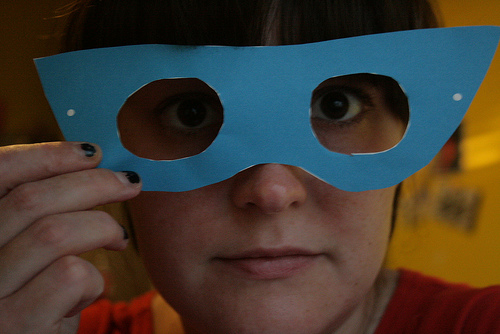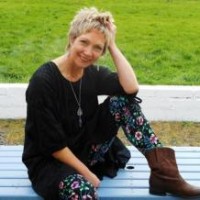Once upon a time…
A baby was born. As the years slipped by, the baby grew to be a child, then a teenager, and then an adult whose desire for fortune and a happy life brought them on a journey out into the big,wide world. But the journey was far from simple and many a demon had to be slain along the way.
We’re all fascinated by stories of one kind or another.
Stories of celebrities, stories of heroines and anti-heroes, stories of those who went astray but came good in the end—they all speak to our innate and unquenchable thirst for a good tale as well as satisfying our curiosity about how others deal with the tricky business of living.
The stories that often hold greatest fascination for us are those that feature characters which are real yet somehow larger-than-life—characters that have had to face trials more severe than our own or have had the courage to do things we barely dare dream of.
These are the characters that have somehow managed to harness the archetypal powers of the universe and to embody them in the lives that they lead.
It’s not uncommon to end up at a point in our lives when it feels as if we are living a story which has been scripted by others rather than by our own conscious design.
Even if we have deliberately chosen the career we’re now pursuing, the house we’re paying the mortgage on or the family we’ve created, we can still have periods of feeling as if we’ve snookered ourselves—backed ourselves into a corner from where we won’t be able to escape for years. Stories allow us time to escape from that feeling of being trapped—allow our imaginations the freedom to roam where our bodies may not be able to follow.
But stories can be more than a temporary diversion, they can genuinely help us to find more creative solutions to those places in our lives where we feel stuck or where we feel ourselves to be less than the person we know we can be.
They can help us to draw some of that archetypal energy into our own lives.
When we direct the same open fascination and curiosity with which we watch a movie or read a book toward our own lives, it gives us an opportunity to step back a little so that we can see things more clearly. It can be difficult to see options when we’re bogged down in the tiny detail of our lives and feeling as if we have no choice but to continue living as we have been doing.
But curiosity is an amazing tool in releasing resistance. And placing ourselves as the hero or heroine at the center of our own life story can loosen up our creativity and allow new perspectives to come flooding in. It can also give us free rein to respond more openly to whatever life’s journey demands of us from day to day without getting stuck in rigid response patterns.
Years ago when I was doing part of my shamanic training, I remember Alberto Villoldo speaking about something similar.
“I look in the mirror in the morning as I’m shaving and say ‘I’m not sure who you are, but I’ll shave your face anyway.””
I’m paraphrasing from memory, but the gist of the comment has stayed in my mind since, as a wonderful way of illustrating how we can hold that place of open curiosity about ourselves—a place where we don’t assume to know everything about ourselves or about what we might do next.
From this place of openness we can start to weave stories that represent the lives we’d like our personal hero or heroine (that is, ourselves) to live. Would they be happy with what they’ve created so far in their lives, and are just needing to relax back into the richness of it? Or are there parts of the story that have yet to be written, or that need to be re-written as they’re second-hand scripts passed to us by others?
If you had a choice, what kind of story would you write for your own personal heroine or hero?
Well, here’s an opportunity to start finding out. Putting aside any doubts about what you think may be possible, take a few moments to try the following exercise. All you need is some paper, a pen and quiet time—or a partner, if you’d like—to make it a shared exercise (but it’s important that you still do the writing part separately and in silence even if you are sharing).
You’re going to write a short story of three paragraphs or so, following the directions below and starting with the phrase: Once upon a time there was a young girl/boy. Write the story without thinking too much—straight from whatever creative part of yourself you can tap into.
The first paragraph is about your childhood and teenage years, only written in the third person. Using big, bold brush strokes, as if painting a sketch that somehow summarizes the first eighteen to twenty years of your life, you’re going to pick up the main themes that have shaped you. If the teenage years were significantly different to childhood, feel free to expand into a second paragraph.
The second paragraph is about the period from adulthood to now—again picking up the main themes. What has brought the heroine or hero to where s/he is now? What is life like for them now?
The third paragraph is about what happens to them from now on, stretching into the future as far as you’d like to go. This is where you need to weave the themes from the earlier paragraphs forward into a future you’d like to see for your character. What dreams does s/he have that come true? What adventures await? What happiness beckons? Try to feel inside for the vibration that strikes the deepest resonance as you write this last paragraph.
When you have finished, re-read what you’ve written out loud.
If you have a friend you can enlist, ask them to listen to your tone of voice as you read it—two or three times over—and to feed back to you anything that they notice as you read. Listen for dips and highs as you read. Are there places that are charged with emotion? Or the opposite—places that are totally flat and lack conviction?
Now take the time to pick over the story.
Are there things that you’d like to change in any of the paragraphs? If there are, write a new version of the story and repeat the exercise above, seeing what difference it makes to how you feel and sound as you read the new one.
There’s no ultimate goal with this exercise except to start seeing other perspectives on your life. It can be useful at times when we feel stuck in some way, or when things aren’t going the way we might like them to go. Or it can just be a fun way to throw some more creativity into how we shape our own lives.
One thing it does, though, is put us firmly into the driving seat as the author of our own heroic journey. Whether we choose to stay there or hand the wheel back to someone else is up to us.
Love elephant and want to go steady?
Sign up for our (curated) daily and weekly newsletters!
Editor: Catherine Monkman
Photo: squeezeomatic/Flickr



Read 0 comments and reply